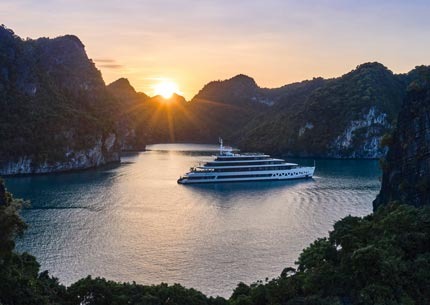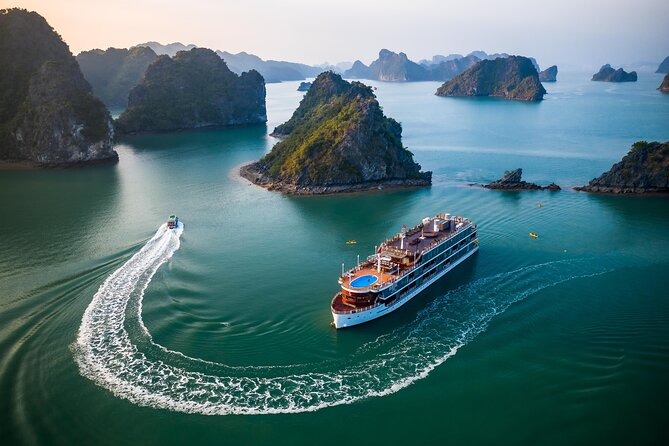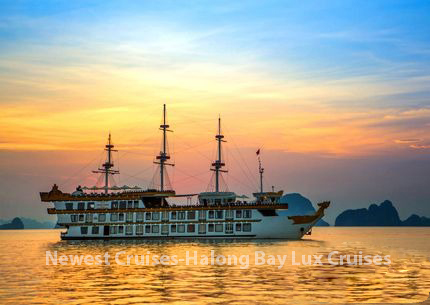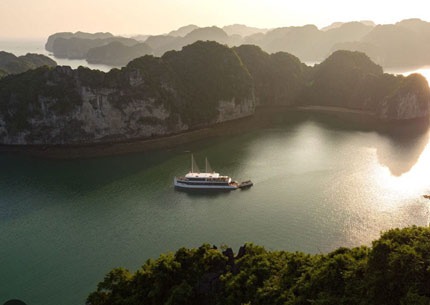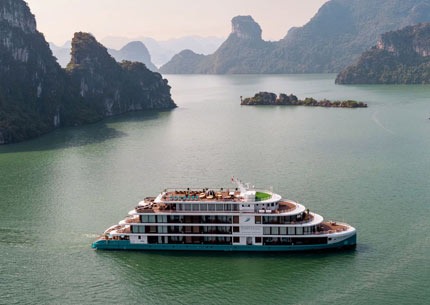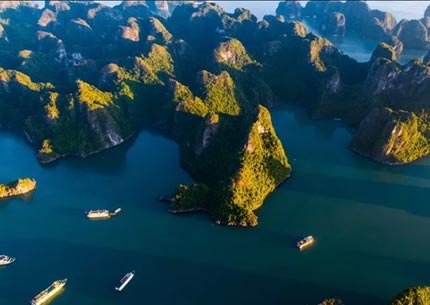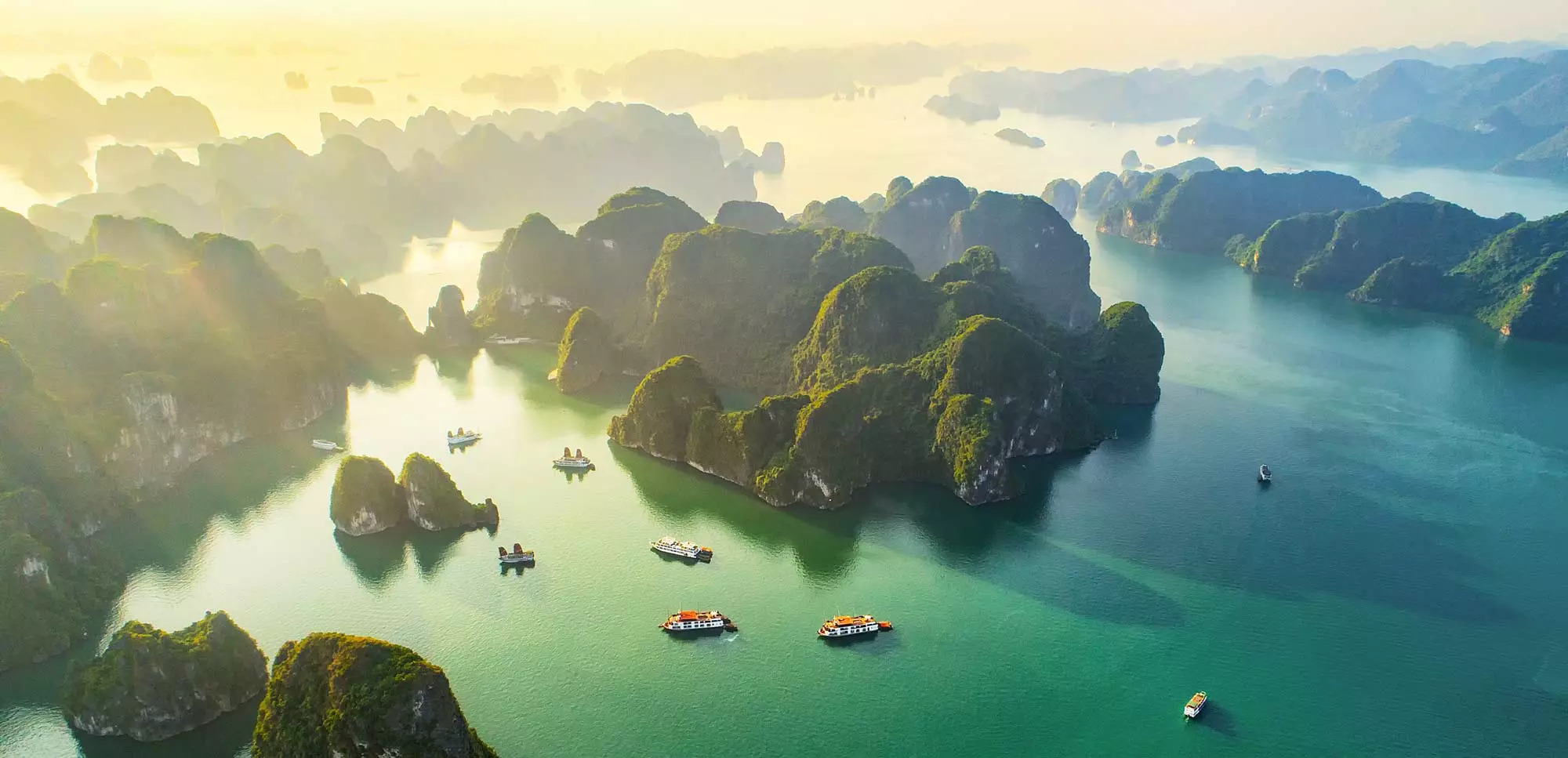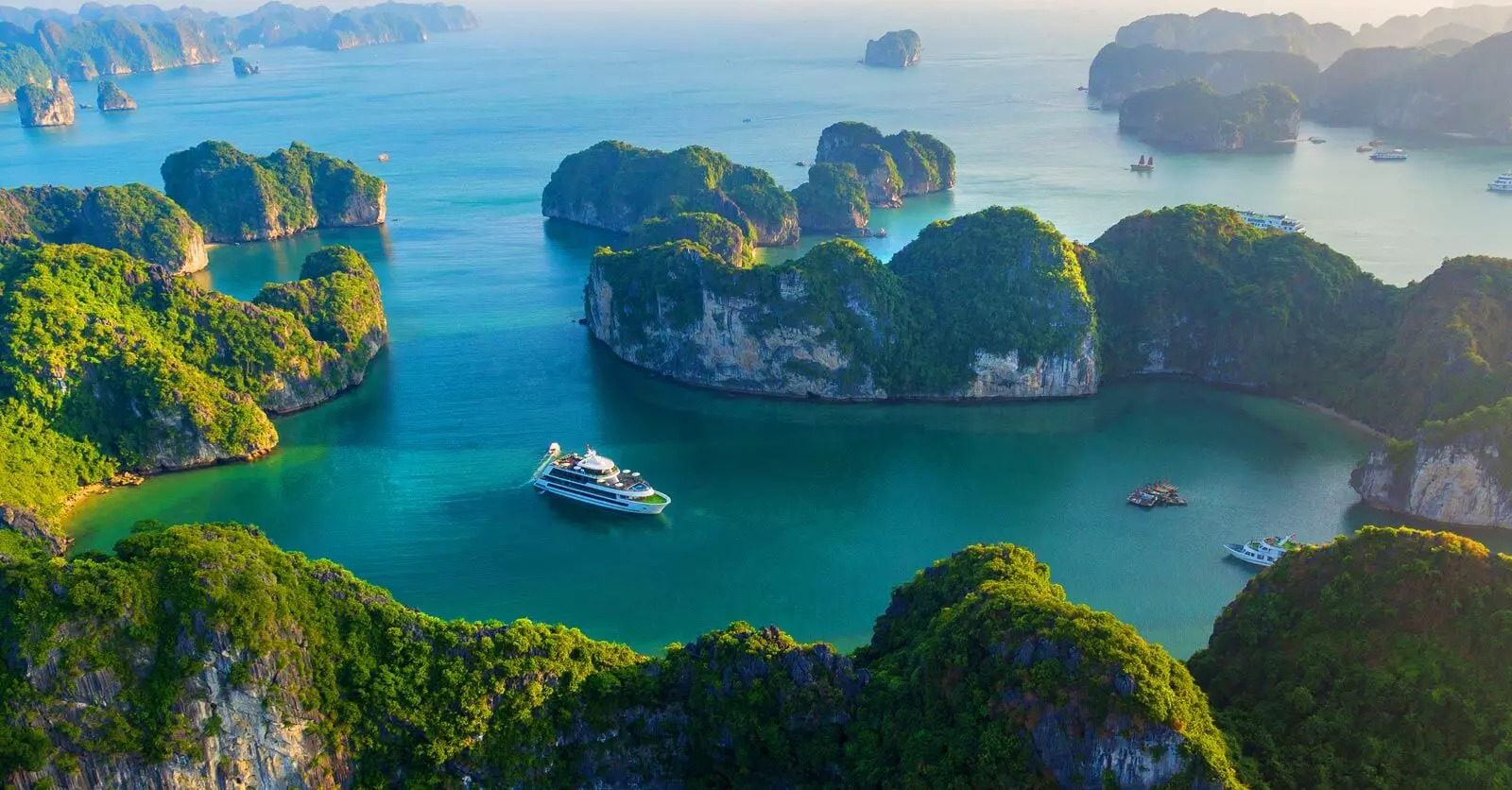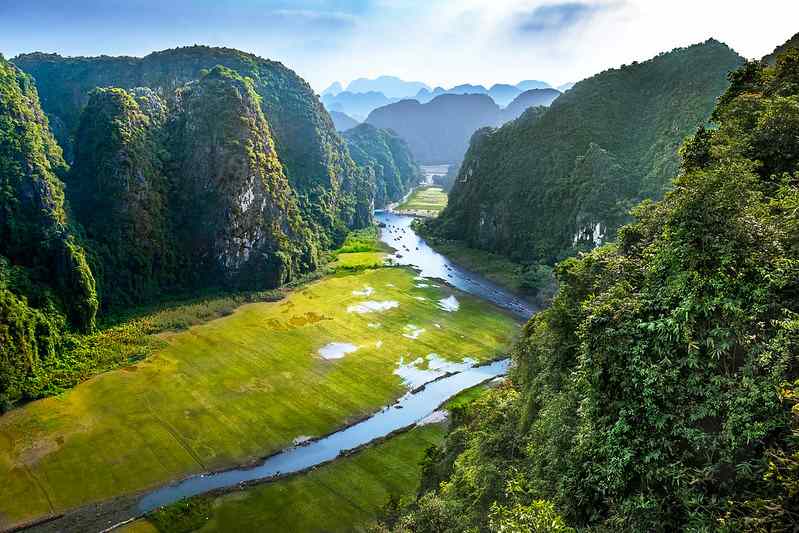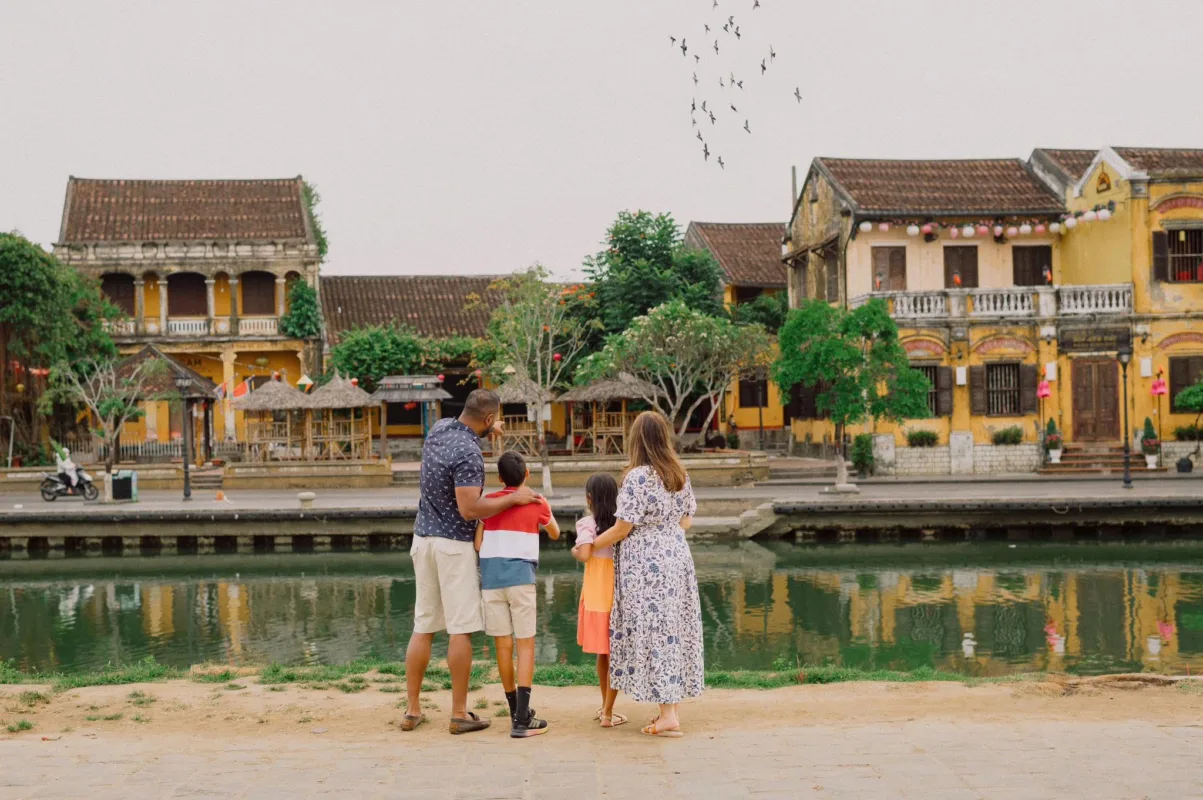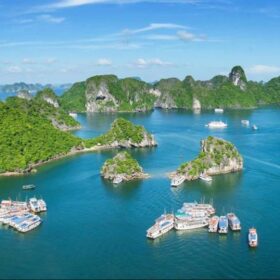15 Smart Steps If Your Hoi An Tour Is Canceled by a Typhoon in 2025-2026
Facing a canceled Hoi An tour due to a typhoon in 2025? Don’t let severe weather ruin your Vietnam adventure. This comprehensive guide provides 15 actionable solutions, from securing full refunds to discovering typhoon-safe alternatives, ensuring you make the most of your vacation despite nature’s unpredictability. Updated with the latest 2025-2026 Vietnam typhoon forecasts and tour operator policies, this resource helps transform a potential travel disaster into an unforgettable journey.
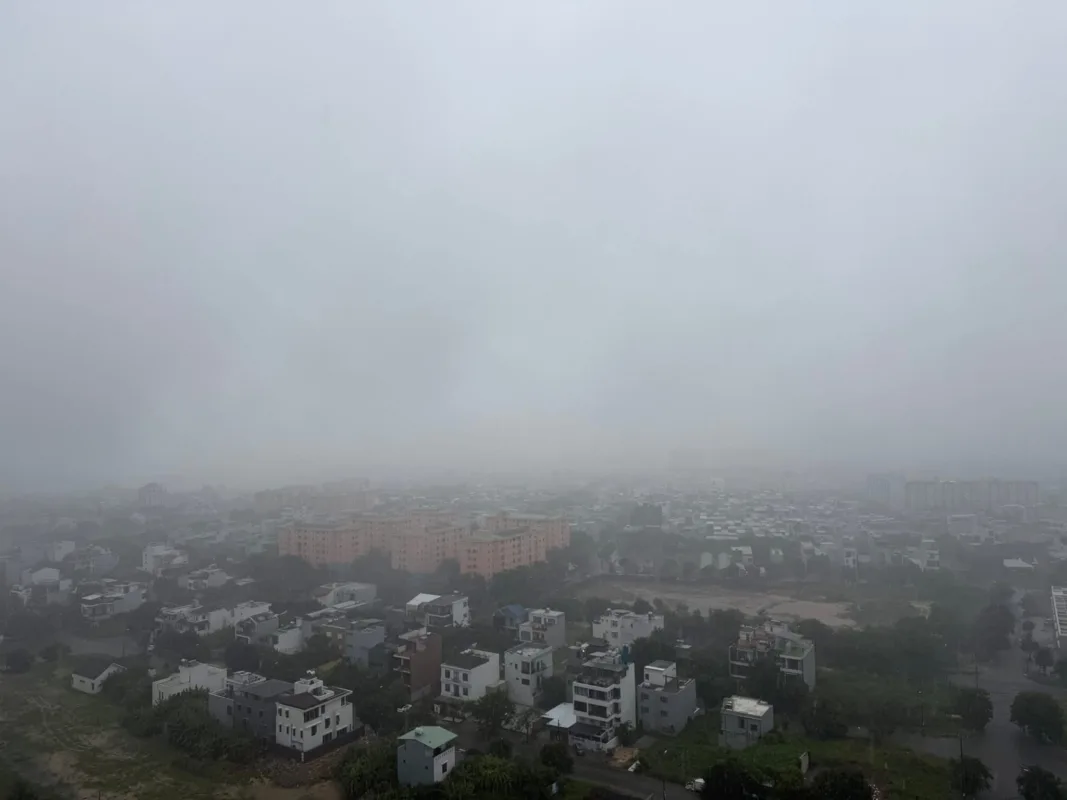
Understanding Vietnam’s Typhoon Season for Travelers in 2025-2026
Vietnam’s central coast, including the beloved UNESCO heritage town of Hoi An, experiences its most intense typhoon activity between August and November each year. According to the Vietnam National Center for Hydro-Meteorological Forecasting, 2025-2026 is predicted to be particularly active due to strengthening La Niña conditions in the Pacific Ocean.
Key 2025-2026 Typhoon Statistics:
| Month | Expected Number of Storms | Average Rainfall | Risk Level
|
|---|---|---|---|
| August | 2-3 | 294mm | Moderate |
| September | 3-4 | 532mm | High |
| October | 2-3 | 657mm | Severe |
| November | 1-2 | 366mm | Moderate |
Scientists at Vietnam’s Institute of Meteorology, Hydrology and Climate Change have reported that typhoons in 2025-2026 may reach sustained wind speeds of 130-150 km/h, potentially leading to severe flooding in Hoi An’s Ancient Town where water levels have historically risen up to 1.8 meters during major storms.
The likelihood of experiencing a tour cancellation during peak typhoon months (September-October) has increased to approximately 37% in 2025, compared to 28% in previous years.
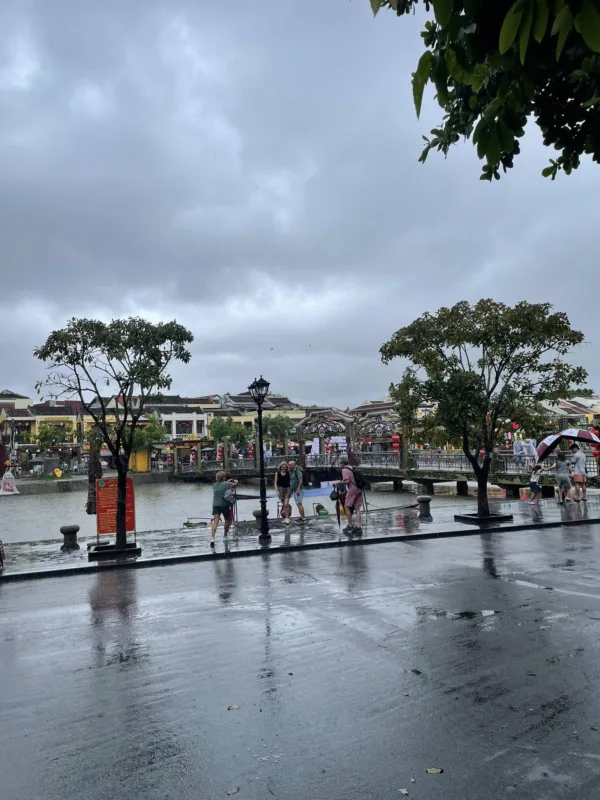
Why Tours Get Canceled During Typhoon Season
Tour operators prioritize traveler safety above all else. Most reputable companies operating in Hoi An have established clear cancellation protocols when:
- Wind speeds exceed 75 km/h, making transportation unsafe
- Flooding exceeds 30cm in key tourist areas
- The Vietnamese government issues official travel warnings
- Essential infrastructure (roads, power, water) becomes compromised
- Historic sites close for protection against storm damage
Notably, the Da Nang International Airport (28km from Hoi An) implemented new safety protocols in late 2024 that trigger automatic flight cancellations when sustained winds exceed 90 km/h, affecting many tour arrivals.
Immediate Actions When Your Hoi An Tour Gets Canceled by a Typhoon
The moment you receive a cancellation notification, swift action can significantly minimize disruption and maximize your chances of salvaging your vacation plans.
1. Verify the Cancellation Terms and Document Everything
Before doing anything else, carefully review your booking confirmation and cancellation policy. Vietnam’s Tourism Ministry implemented new consumer protection regulations in late 2024 requiring all tour operators to offer either full refunds or equivalent value alternatives for weather-related cancellations.
Document collection checklist:
- Screenshot the cancellation notice
- Save email communications
- Record the names of representatives you speak with
- Document weather conditions and official advisories
- Keep receipts for additional expenses incurred
This documentation will be crucial for insurance claims and potential disputes. Vietnam’s new Digital Tourism Platform (launched in January 2025) also allows travelers to register complaints directly with authorities if tour operators fail to honor cancellation policies.
2. Contact Your Tour Provider Through Multiple Channels
Don’t rely on a single communication method. During severe weather, power outages and network disruptions are common in Vietnam’s central region.
Effective contact methods ranked by reliability during storms:
- WhatsApp/Zalo (Vietnam’s preferred messaging app)
- Phone calls to emergency numbers
- Email (with high-priority flagging)
- Social media direct messages
- In-person at physical offices (if safely accessible)
Leading tour operators like Halong Bay Lux Cruises maintain 24/7 emergency support lines during typhoon season. Their multilingual staff can quickly arrange alternatives or process refunds even during severe weather events.
3. Understand Your Refund Rights Under 2026 Vietnamese Tourism Law
The updated Vietnamese Tourism Law (Decree 68/2025) strengthened consumer protections specifically for weather-related cancellations:
- Full refunds must be processed within 7 business days
- Vouchers for future travel must offer minimum 18-month validity
- Rescheduling must be offered without administrative fees
- Force majeure clauses cannot exclude typhoons during known storm seasons
Notable exception: If less than 30% of your tour is affected and the operator can provide alternative activities of equal value, they may not be required to offer a full refund.
For international visitors, Vietnam’s Tourism Department established the Tourist Protection Hotline (1900 1883) with English-speaking staff available 24/7 to assist with disputed cancellations.
Leveraging Travel Insurance for Typhoon Cancellations in 2025-2026
A robust travel insurance policy is your strongest financial protection against typhoon disruptions. However, significant policy changes have occurred for 2025-2026 coverage in Southeast Asia.
Key Insurance Coverage Elements to Verify
The most typhoon-friendly insurance policies for Vietnam travel in 2025-2026 include:
- Named storm coverage: Explicit protection for named tropical systems
- Trip interruption: Coverage for cutting your trip short due to weather
- Trip delay: Reimbursement for accommodation and meals during weather delays
- Missed connection protection: Coverage for rearranging missed flights due to weather
- Emergency evacuation: Transport to safety if conditions become dangerous
Insurance industry update: As of January 2025, major insurers including World Nomads, Allianz, and AIG have revised their Vietnam coverage to include “adverse weather extensions” specifically for central Vietnam travel between August-November, but these typically require purchase at least 14 days before your departure date.
Some policies now offer “cancel for any weather concern” riders that allow you to cancel if a typhoon is forecasted—even if it hasn’t yet caused actual disruptions. This premium option typically adds 15-22% to your policy cost but provides maximum flexibility.
Filing Effective Insurance Claims After a Typhoon Cancellation
To maximize your reimbursement:
- Document the official storm warning from Vietnam’s Meteorological Agency
- Obtain written confirmation of your tour cancellation
- Keep all receipts for additional expenses
- Photograph or video adverse conditions if safe to do so
- Submit your claim within 48-72 hours of the incident
Most insurers now offer expedited claim processing for weather-related disruptions in Vietnam, with typical processing times of 5-7 business days for straightforward claims with complete documentation.
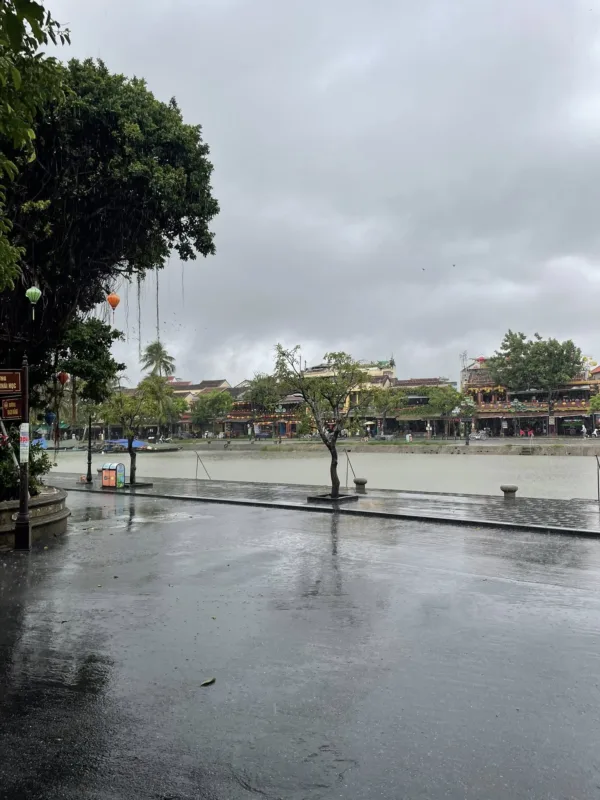
Alternative Destinations in Vietnam During Typhoon Season
When a typhoon disrupts your Hoi An plans, Vietnam offers numerous alternatives with dramatically reduced storm risk and equally rewarding experiences.
Northern Vietnam: Culturally Rich and Typhoon-Protected Options
Northern Vietnam typically experiences fewer direct typhoon impacts, particularly in inland areas. Consider these alternatives:
Hanoi and Surroundings:
- The 1,050-year-old capital offers 21 major museums and 45 historical sites
- Old Quarter’s 36 ancient streets provide similar architectural charm to Hoi An
- Day trips to Ninh Binh (109km south) showcase stunning limestone formations
Halong Bay & Lan Ha Bay:
While coastal, Halong Bay’s unique topography provides natural protection against all but the strongest storms. The 1,969 limestone islands create natural wind barriers and protected coves where cruise operations can continue safely during moderate weather events.
Luxury overnight cruises have become a popular alternative for travelers diverted from central Vietnam. These floating hotels feature 24-42 square meter cabins with panoramic windows, gourmet dining, and activities like kayaking in protected coves.
For those seeking a more immersive experience, three-day Halong Bay cruises venture into the less-visited Lan Ha Bay area with opportunities to explore Cat Ba Island’s 85 square kilometer national park, home to the endangered Cat Ba langur.
Mountain Retreats: Elevation Equals Protection
Vietnam’s highland regions offer not just typhoon protection but completely different climatic and cultural experiences:
Sapa (Northern Highlands):
- 1,600 meters above sea level with cool temperatures (15-25°C in fall)
- Home to 8 distinct ethnic minority groups with unique textile traditions
- Over 35km of established trekking routes through terraced rice fields
Da Lat (Central Highlands):
- Located 1,500 meters above sea level with year-round spring-like climate
- French colonial architecture across 83 heritage buildings
- Vietnam’s premier coffee-growing region with specialized tasting tours
These mountain destinations typically experience only heavy rainfall during typhoon season, without the dangerous winds and flooding that affect coastal areas.
Southern Vietnam: The Consistently Dry Alternative
During Central Vietnam’s typhoon season, the southern regions typically enjoy much drier conditions:
Ho Chi Minh City (Saigon):
- Vietnam’s largest city with over 185 classified historical sites
- World-class culinary scene featuring 23 distinct regional Vietnamese cuisines
- Gateway to the Mekong Delta’s floating markets and rural waterways
Phu Quoc Island:
- Vietnam’s largest island (574 sq km) with 28 separate beaches
- Typically receives 50-70% less rainfall than Central Vietnam during typhoon season
- Home to the world’s longest oversea cable car (7,899 meters)
Smart Rebooking Strategies for Canceled Hoi An Tours
If you’re determined to experience Hoi An despite a typhoon disruption, strategic rebooking can significantly increase your chances of success.
Timing Your Rescheduled Visit
Typhoons in Vietnam typically move through quickly, with most severe conditions lasting 24-72 hours. However, flooding can persist much longer.
Optimal rebooking windows after a typhoon passes:
- Ancient Town tours: 3-4 days (after floodwaters recede)
- Cooking classes and indoor activities: 2-3 days
- Beach activities: 7-10 days (water quality issues may persist longer)
- Rural and agricultural tours: 5-7 days (depending on road repairs)
The Vietnamese government’s post-typhoon recovery has become increasingly efficient, with dedicated tourism restoration teams prioritizing visitor areas. In 2024, Hoi An’s Ancient Town was fully operational just 48 hours after Typhoon Noru passed, though outlying areas took longer to recover.
Negotiating Favorable Rebooking Terms
Most tour operators are highly motivated to rebook canceled tours rather than process refunds. Use this leverage to negotiate enhanced experiences:
- Request room/experience upgrades as compensation for disruption
- Ask for additional inclusions (meals, activities) at no extra cost
- Negotiate flexible cancellation terms for your new booking
- Request complimentary airport transfers or transportation
- Ask for guaranteed rates even if rebooking during a higher-priced season
Larger tour operators like Vietravel and Saigontourist have established “weather disruption protocols” that automatically offer upgraded experiences for rebooked tours affected by typhoons.
Emergency Resources During Typhoon Season in Vietnam
Vietnam has significantly improved its emergency response systems for tourists affected by severe weather.
Essential Contact Information
| Service | Contact | Operating Hours | Languages
|
|---|---|---|---|
| Tourist Emergency Hotline | 1900-1883 | 24/7 | English, Vietnamese, Chinese |
| Vietnam Disaster Management | 1900-7877 | 24/7 during storms | Vietnamese, limited English |
| Tourist Police | 113 | 24/7 | Vietnamese, some English |
| International SOS | +84 28 3829 8520 | 24/7 | Multiple languages |
Digital Resources for Real-Time Updates
Vietnam has developed several smartphone applications specifically for weather emergencies:
- VnAlert: Real-time alerts and evacuation maps
- Vietnam Weather: Hourly forecasts and typhoon tracking
- Safe Travel Vietnam: Emergency service locator and phrase translation
- Zalo: Vietnam’s messaging app used by emergency services for broadcasts
These applications offer English language options and function offline once downloaded, crucial when networks become unreliable during storms.
Creating a Flexible Vietnam Itinerary to Minimize Typhoon Disruption
The most seasoned Vietnam travelers build typhoon contingencies directly into their itineraries, especially for trips between August and November.
The North-to-South Strategy
A strategic approach is to begin your Vietnam journey in the north during typhoon season:
Sample 14-day Flexible Vietnam Itinerary:
- Days 1-4: Hanoi and surroundings
- Days 5-7: Halong Bay cruise
- Days 8-11: Hoi An (typhoon risk period)
- Days 12-14: Ho Chi Minh City
This structure allows you to:
- Complete northern highlights before potential flight disruptions
- Have a southern backup if central Vietnam experiences typhoons
- Potentially return to Hoi An after a storm passes if your schedule permits
Transportation Contingency Planning
Vietnam’s transportation network offers multiple options for navigating around typhoon-affected areas:
Domestic Flight Alternatives:
Vietnam Airlines, Bamboo Airways, and VietJet now offer “weather flexibility” fare options that permit free date changes during storm warnings.
Rail Options:
The Reunification Express train traverses the entire length of Vietnam with routes often operating during moderate weather when flights are grounded. The 36-hour Hanoi to Ho Chi Minh City journey can be broken into segments.
Private Transportation:
Services like Dichung and Grab Car offer long-distance private driver services that can navigate around localized flooding using real-time road condition data.
What to Pack for Vietnam Travel During Typhoon Season
Proper preparation can dramatically improve your comfort and safety if caught during inclement weather.
Typhoon-Ready Packing List
Beyond standard travel items, include these typhoon-specific essentials:
Tech and Communications:
- Power bank with minimum 20,000mAh capacity
- Waterproof phone case rated IPX8 or higher
- Offline maps downloaded to your devices
- Physical copy of emergency contacts and hotel information
Clothing and Protection:
- Quick-dry clothing (synthetic fabrics like nylon and polyester)
- Lightweight, breathable rain jacket with sealed seams
- Waterproof footwear (rubber sandals work well in tropical conditions)
- Microfiber towel for quick drying
Health and Safety:
- Water purification tablets or portable filter
- First aid kit including anti-diarrheal medication
- Waterproof dry bags in various sizes
- Battery-operated flashlight or headlamp
Document Protection:
- Waterproof document holder for passport and travel documents
- Digital backups of all important documents
- Multiple copies of travel insurance information
Returning to Hoi An After a Typhoon: What to Expect
If you do manage to visit Hoi An after a typhoon has passed, you’ll encounter a city that recovers with remarkable resilience and efficiency.
The Post-Typhoon Experience
Hoi An’s response to typhoons has been refined over centuries of dealing with seasonal flooding:
- Ancient Town buildings are constructed with water-resistant ground floors
- Restoration teams prioritize tourist areas for cleanup and repairs
- Merchants often offer “post-typhoon specials” to encourage visitors to return
- Traditional wooden boats replace motorized transport in historically flooded areas
- Special “typhoon recovery” tours show how the ancient town’s architecture withstands flooding
Many travelers report that visiting Hoi An just after a typhoon provides unique photographic opportunities and a deeper appreciation of the town’s harmonious relationship with water.
Areas That Recover Quickly vs. Slowly
Not all parts of Hoi An and surroundings recover at the same pace:
Fast Recovery (1-3 days):
- Ancient Town core (Tran Phu and Nguyen Thai Hoc streets)
- Japanese Covered Bridge and surrounding area
- Market areas and main shopping districts
- Major hotels and resort properties
Slower Recovery (5-7 days):
- Tra Que Vegetable Village
- Thanh Ha Pottery Village
- An Bang and Cua Dai beaches
- Cam Kim countryside
Conclusion: Embracing Flexibility for an Unforgettable Vietnam Experience
While typhoons may disrupt your Hoi An plans in 2025-2026, they don’t need to derail your entire Vietnam experience. With proper preparation, insurance coverage, and flexible alternatives, you can transform a weather disruption into an opportunity to discover Vietnam’s incredible diversity.
Remember that Vietnam’s tourism infrastructure has adapted to these seasonal patterns, with operators like Halong Bay Lux Cruises offering typhoon-safe alternatives when central regions experience storms. Whether you’re rescheduling your Hoi An adventure or pivoting to explore Vietnam’s mountainous highlands or northern treasures, the country’s rich cultural tapestry ensures meaningful travel experiences in any weather.
By approaching your journey with flexibility and the right resources, you’ll join the ranks of seasoned travelers who view Vietnam’s seasonal rhythms not as obstacles but as part of the authentic experience of this remarkable country.
Book your luxury Halong Bay experience
Contact Halong Bay Lux Cruises now via Hotline | WhatsApp: +84.978.358.422 for pricing and special offers!
Thousands of travelers from Europe, UK, USA, and Australia have rated us 5-stars for our exceptional service and unforgettable Halong Bay luxury experience.
- Hotline | WhatsApp: +84.978.358.422
- Phone | WhatsApp: +84.962.261.687
- Email: halongbayluxcruises@gmail.com or vietnammarveltravel@gmail.com
- Website: halongbayluxcruises.com
- Reviews: Top Halong Bay Cruise Reviews on TripAdvisor
- Fanpage: https://www.facebook.com/halongbayluxcruises

